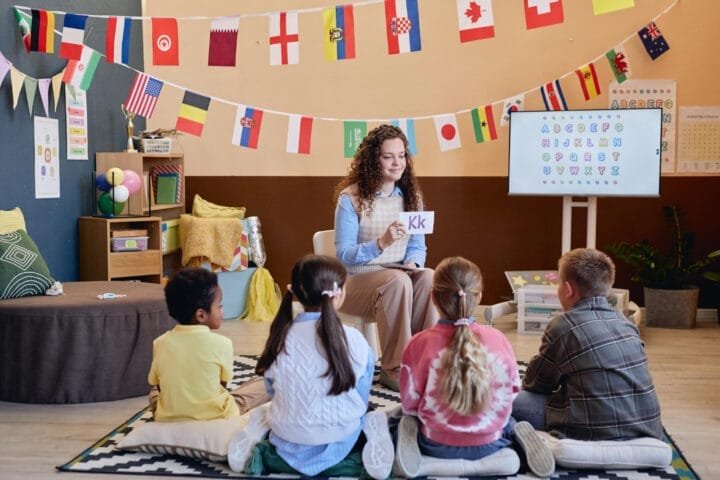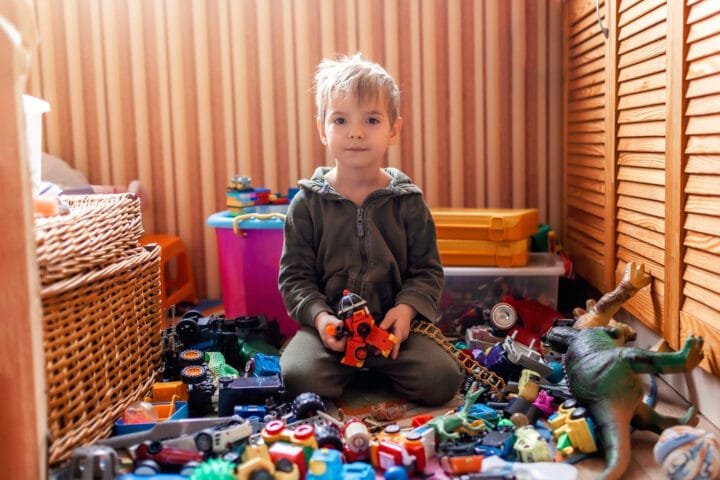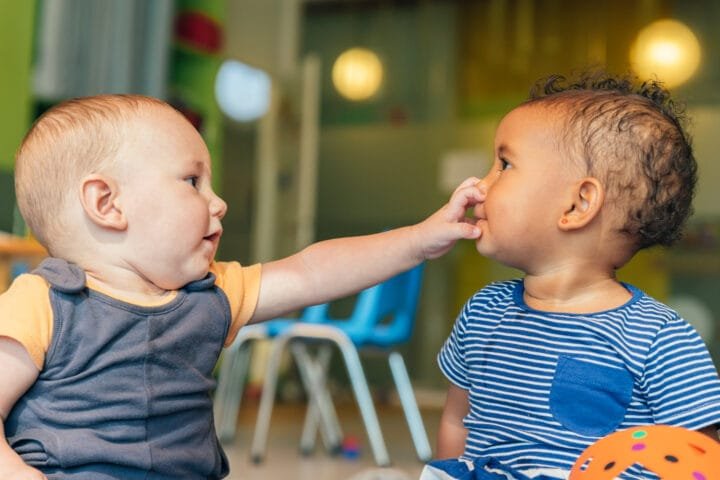The Hidden Risks: Understanding the Dangers of TikTok and Snapchat for Kids
Why TikTok and Snapchat Appeal to Kids?
Imagine being transported into a parallel universe where time flies effortlessly, your creativity knows no bounds, and popularity is just a click away! Welcome to TikTok and Snapchat – the kingdom where our kids reign and we, parents, are mere spectators, often baffled. These platforms are like a digital amusement park; there’s always something new, captivating, and equally concerning.
TikTok, with its short-form, snappy videos, and Snapchat, offering disappearing messages and quirky filters, have become digital playgrounds for Generation Z. It’s easy to see why they’re so addictive. From the exhilarating rise of a dance challenge to thrilling, real-time communication with friends, these apps serve as social lifelines in our kids’ digital journey.
The Key Dangers of TikTok for Children
Risk 1: Exposure to Inappropriate Content
Now, here’s the kicker – as much as TikTok appears to be an endless reel of fun, it’s not all sunshine and roses. My daughter once asked me what “ASMR” meant after watching countless videos tagged with it. It reminded me how easily kids can stumble upon mature or outright inappropriate content. The dark side of TikTok algorithms can expose our children to harmful material, ranging from explicit content to dangerous challenges. In 2024, a report by Amnesty International highlighted how TikTok’s algorithms can suggest risky videos, exacerbating the problem for young users.
Imagine our children, scrolling innocently through their For You page, and suddenly they face content that’s anything but innocent. Various trends, some even promoting self-harm or risky behaviors, can unknowingly catch their attention. This exposure happens effortlessly, often leaving an imprint on young, impressionable minds. With TikTok’s user base growing explosively – over 1 billion monthly active users as of 2023 – the likelihood of stumbling upon inappropriate content has become a significant concern for parents worldwide.
Risk 2: Predatory Behavior and Online Grooming
Scrolling through TikTok can make you believe in the good side of humanity – until you hit the murky waters of online predators. I had a heart-to-heart with a fellow parent who discovered that her son had been receiving unsettling messages from strangers on TikTok. This is not an anomaly. Predators often target children through direct messages and seemingly innocent comments. Despite TikTok’s efforts to enhance safety measures, many kids bypass age restrictions, making them vulnerable to online grooming.
TikTok’s platform is inherently social, encouraging users to interact with one another through comments and direct messages. This interactivity is both its allure and its Achilles heel. Predators exploit this feature to gain access to unsupervised communication with minors. The National Center for Missing & Exploited Children reported a 97.5% increase in online enticement incidents in 2023, a troubling statistic that underscores the need for parental vigilance.
Miscreants often mask their intentions, presenting themselves as friends or mentors to earn the child’s trust. It’s a terrifying reality that many kids face, often compounded by their reluctance to discuss such encounters with parents out of fear or shame. This makes parents like us an urgent need to be more involved and informed.
Risk 3: Mental Health Impacts
Back in the day, stress meant worrying about grades or being picked last in gym class. Today, kids have another formidable stressor – TikTok! Constantly comparing themselves to the seemingly perfect lives they see online can eat away at their self-esteem. Research from 2023 uncovered links between TikTok usage and increased anxiety and depression in teens. Imagine the pressure of airbrushed perfection and viral fame gnawing at a young child’s sense of self-worth. It’s a recipe for emotional disaster.
The incessant wave of content can create FOMO (Fear of Missing Out), driving kids to spend inordinate amounts of time on the app. Studies reveal that teens spending over three hours per day on social media platforms like TikTok are at a higher risk of experiencing mental health issues, including anxiety, depression, and suicidal thoughts. The constant expectation to “keep up” or “go viral” can lead to severe emotional turmoil, pushing teens to extreme lengths to achieve and maintain their online persona.
Personally, watching my niece deal with feelings of inadequacy and comparison due to TikTok was gut-wrenching. The number of likes, followers, and views become metrics of self-worth for many children, creating an environment ripe for anxiety and depression. These digital validations can distort their perception of reality, blurring the lines between real achievements and digital echoes.
The Dark Side of Snapchat for Children
Risk 1: Ephemeral Content and Sextortion
Snapchat’s charm lies in its disappearing messages – a feature that can be both thrilling and treacherous. A friend once shared a harrowing story about her niece encountering sextortion on Snapchat. Disappearing content often leads kids into a false sense of security, thinking what they send will vanish forever. In reality, it opens doors to sextortion and other malicious activities, as predators exploit this perceived invisibility.
The platform’s trademark feature – ephemeral messages – promotes a sense of fleeting moments, but this can be misleadingly dangerous. Predators use this feature to solicit explicit content from minors, knowing the evidence will disappear once viewed. Unfortunately, screenshots and third-party apps can easily bypass this protection, leaving children exposed and vulnerable. The Federal Bureau of Investigation (FBI) noted a significant rise in sextortion cases, with many incidents originating from platforms like Snapchat.
Risk 2: Snap Map and Privacy Concerns
Picture this: You’re hosting a sleepover for your child and her friends. Unknown to you, her whereabouts are being broadcast to all her Snapchat contacts through Snap Map. With Snap Map, users can share their real-time location, often without realizing its broader implications. This feature has raised substantial privacy concerns, as it can inadvertently reveal a child’s exact location to strangers, putting them at risk.
Snap Map operates in real-time, showcasing users’ locations on a map accessible to their friends. While this can be handy for meeting up with friends, it also poses significant privacy and safety risks. Stranger danger becomes more real when your child’s location is shared unknowingly. The FBI and cybersecurity experts continually warn about the risks of such location-sharing features, emphasizing the importance of educating children about digital privacy.
Risk 3: Unhealthy Social Pressures
Snapchat has another trick up its sleeve – streaks. Maintaining these streaks becomes a form of social currency, but at what cost? The pressure to keep streaks alive can lead to obsessive behavior and heighten anxiety. Another mom in our circle lamented how her son would panic if unable to maintain his Snapchat streaks, significantly affecting his mental well-being. Additionally, bullying and anonymous messages further fuel mental distress, exemplifying the app’s darker undercurrents.
The streak feature encourages daily interaction, turning casual socializing into an obsessive activity. Kids feel compelled to send snaps daily to maintain these streaks, driven by a fear of breaking the chain. This pressure exacerbates anxiety and can become a significant source of stress, overshadowing the initial fun and spontaneity intended by the feature.
Practical Steps: How Parents Can Mitigate These Risks
Monitoring and Education
As parents, we can’t afford to be passive spectators in our children’s digital lives – we need to step up our game! Simple steps like installing parental controls or using monitoring apps such as Bark or Google Family Link can help keep tabs on what our kids are up to. We can educate our children about the importance of digital citizenship and the dangers lurking in their favorite apps. Teaching them to never share personal information and to report any uncomfortable interactions is vital.
Arming ourselves with knowledge and tools is crucial in this digital age. Encourage open dialogue about the content they encounter and the people they interact with online. Share stories and discuss the potential risks, creating a safe environment for them to express concerns and seek guidance.
Building Open Communication
Let’s face it – tech can be intimidating. But fostering an open line of communication with our kids is paramount. Encourage them to speak up if they encounter anything distressing online. Regular conversations about digital well-being and stress management can empower them to navigate these digital minefields responsibly.
Effective communication is key. Create a supportive atmosphere where your child feels comfortable discussing their digital experiences without fear of judgment. Share your own experiences and emphasize the importance of mental health and online safety. When children understand that their parents are allies, they are more likely to seek help and share their challenges.
Leveraging Tools to Safeguard Kids Online
Remember, technology isn’t the enemy. We should use it as an ally. TikTok’s Family Pairing feature allows you to link your account to your child’s, providing a higher level of oversight. Similarly, Snapchat offers settings to restrict who can contact your child and see their location. Utilize these tools to create a safer online environment for your kids.
Incorporating these tools into your digital parenting strategy can significantly mitigate risks. Apps like Family Link offer valuable insights into app usage, screen time, and overall digital behavior. Using these insights, you can set appropriate boundaries, block unsuitable content, and maintain a vigilant watch over your child’s online activities.
Broader Implications: The Future of Kids and Social Media
The Impact on Social Development
The digital era has redefined social interaction for our kids. It’s easy to assume that more screen time means less genuine human connection. Excessive social media use can impair real-life communication skills, making it challenging for children to develop essential social competencies. A 2023 study found that teens spending more than three hours daily on social media were more likely to face social challenges.
Increased screen time can stifle the development of real-world social skills, leading to difficulties in forming and maintaining relationships. Human interactions in cyberspace differ significantly from face-to-face engagements, and kids may struggle to navigate social nuances without the benefit of physical cues such as body language and tone of voice.
Imagining the future, I worry about a generation more comfortable with digital interactions than real-world connections. Developing empathy, active listening, and conflict-resolution skills become challenging when your primary mode of communication is through a screen. We must balance digital engagement with opportunities for real-world socialization to nurture well-rounded individuals.
Calls for Platform and Policy Changes
Parents, educators, and policymakers must advocate stricter regulations regarding child safety and privacy on social platforms. Pushing companies like TikTok and Snapchat to implement more robust safety measures isn’t just a suggestion – it’s a necessity. By joining forces, we can ensure these platforms prioritize our children’s well-being.
Advocacy for better regulatory oversight and platform accountability is integral to creating a safer digital environment. Governments worldwide are increasingly scrutinizing social media companies, pushing for policies that provide a higher degree of protection for minors. Collaborative efforts between tech companies, regulatory bodies, and civil society can drive meaningful change.
The Role of Digital Literacy in Modern Parenting
In this digital age, being tech-savvy isn’t optional – it’s essential. Equipping our kids with critical-thinking skills, resilience, and responsible media usage is fundamental. This goes beyond simply monitoring their activity – it’s about nurturing their ability to navigate the digital landscape thoughtfully and safely.
Digital literacy involves teaching children to assess online content critically, recognize potential dangers, and engage constructively. Encourage them to question the authenticity of information they encounter and understand the implications of their digital footprint. These skills are crucial as they navigate a world where digital and real-life interactions are increasingly intertwined.
A friend shared how she empowers her son by involving him in discussions about privacy settings, data protection, and safe online behavior. This proactive approach ensures that he understands the importance of digital safety and can make informed decisions independently. It’s a model we can all follow to raise digitally literate, responsible young adults.
Conclusion: A Balanced Approach to Social Media for Kids
In conclusion, the digital landscape of TikTok and Snapchat is a complex terrain filled with both wonder and peril. By understanding the risks, actively engaging with our children’s digital lives, and using available tools effectively, we can help them enjoy the benefits these platforms offer without falling prey to their darker aspects.
Empowering ourselves with knowledge and our kids with guidance can strike the right balance, ensuring these platforms bring joy and learning rather than harm. So, let’s embrace our role as digital mentors and safeguard our children’s journey through the fascinating yet fraught world of social media. Together, we can make it a safer place for their imaginations to flourish without fear.
FAQs
The primary risks associated with TikTok for children include exposure to inappropriate content, online predators, and mental health impacts. TikTok’s algorithm can suggest harmful videos, including explicit material and dangerous challenges. Online predators may use the platform to groom children through direct messages. Additionally, the constant social comparison and pursuit of viral fame can lead to anxiety, depression, and low self-esteem in children.
Snapchat poses several threats to child safety, primarily through its disappearing messages, Snap Map, and social pressures like streaks. Disappearing messages can promote risky behaviors and sextortion, as kids assume their content will vanish permanently. Snap Map can reveal a child’s real-time location to all their contacts, including potential strangers. The pressure to maintain streaks can lead to obsessive and anxious behavior, impacting a child’s mental health.
Parents can protect their children on TikTok and Snapchat by using parental controls and monitoring tools like Bark or Google Family Link. Open communication is crucial. Parents should educate their kids about the dangers of these platforms and encourage them to report any uncomfortable interactions. Utilizing platform-specific safety features, such as TikTok’s Family Pairing and Snapchat’s location settings, can also create a safer online environment.
Yes, excessive use of TikTok and Snapchat can have long-term effects on children, including impaired social development, mental health issues, and difficulties in real-world communication. Persistent exposure to social media can create unrealistic standards and a constant need for validation, leading to anxiety, depression, and a diminished sense of self-worth. It can also detract from time spent on activities that build real-life social skills.
If your child encounters a predator on social media, it is crucial to act immediately. Start by having an open and calm conversation with your child to understand the full extent of the interaction. Report the predator’s account to the social media platform and block them. Contact your local authorities or organizations like the National Center for Missing & Exploited Children for further assistance. Ensure your child knows they did nothing wrong and encourage them to always come to you with any concerns.
Recommend Books
A practical guide for parents navigating screen time dilemmas, this book offers science-backed strategies to foster healthy tech habits. It addresses balancing digital engagement with offline experiences, perfect for parents worried about TikTok addiction or Snapchat overuse.
This eye-opening exploration examines how platforms like TikTok and Snapchat shape teen culture, relationships, and self-esteem. It highlights risks like cyberbullying, sexting, and predatory behavior—aligning with the article’s focus on social media’s darker side.
A roadmap for parents raising digital natives, this book provides actionable tips to teach kids responsible tech use, privacy awareness, and resilience against online risks like location-sharing dangers on Snapchat or algorithmic harm on TikTok.
A groundbreaking study on the mental health struggles of teens tethered to social media. Twenge links rising anxiety and depression to apps like TikTok and Snapchat, making it essential reading for parents concerned about social comparison and mental health impacts.
Focuses on fostering digital literacy and critical thinking to combat risks like predatory behavior or inappropriate content exposure. Offers tools aligned with the article’s call for parental involvement and education.















































































